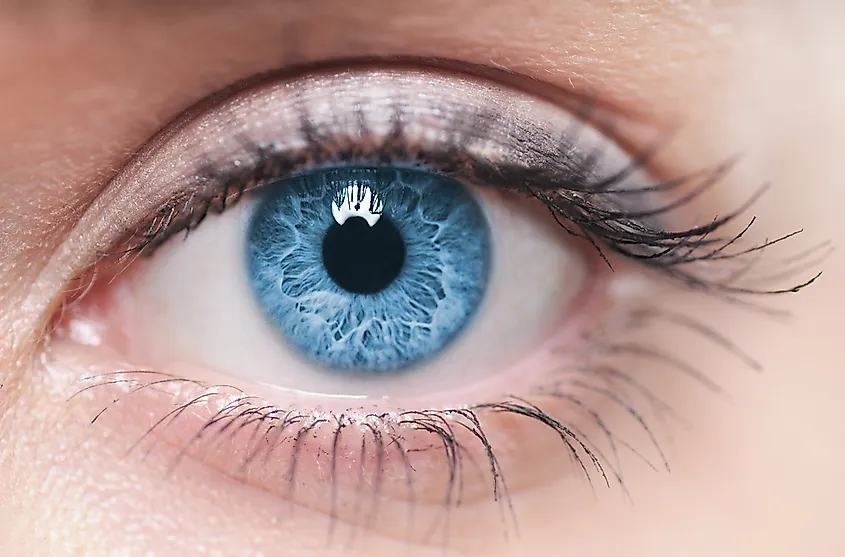

Throughout history, there has been migration, mixing of populations, and genetic diversity, leading to a range of eye colours in various populations around the world. The occurrence of different eye colours in Black individuals is typically attributed to genetic inheritance from non-African ancestors.
#Color of eyes percentage skin#
Although individuals with darker skin tones generally have a higher concentration of melanin in their eyes, there can still be variations in eye colour within any racial or ethnic group. Eye colour is primarily determined by the amount and distribution of melanin in the iris, which is influenced by genetic factors. While it is relatively rare, it is possible for Black individuals to have different eye colours, including blue, green, or hazel. Therefore, while there may be some general patterns in eye colour distribution across different racial or ethnic groups, it is not a definitive determinant and individual variation is significant. Similarly, in populations with a higher prevalence of blue or green eyes, individuals can still have brown or hazel eyes. For example, in populations with a higher prevalence of brown eyes, individuals can still have blue, green, or hazel eyes. While some eye colours are more commonly associated with certain racial or ethnic groups, it is important to note that eye colour can vary within those groups as well. The genetics behind eye colour is not fully understood, but it is believed to involve the interaction of multiple genes. The combination and concentration of these pigments determine the colour of an individual’s eyes. Melanin exists in two forms: eumelanin (brown to black pigment) and pheomelanin (yellow to red pigment). It is primarily determined by the amount and distribution of the pigment called melanin in the iris, which is the coloured part of the eye.

While certain eye colours may be more prevalent in certain ethnic groups due to genetic variations, eye colour is a complex trait influenced by multiple genetic factors. Those who can, however, are more commonly going to be found in parts of Eastern and Northern Europe.Eye colour is not solely determined by race. The least common eye color on the planet is gray, with less than 1% of the world claiming gray eyes. There is no one distinct area where amber is considered more prominent, and those with amber eye colors can be found in countries around the globe. Like hazel, those with amber eye colors also make up around 5% of all eye colors in the world. While those with hazel eyes are more scattered around the globe, they can most commonly be found in Europe and the US. Roughly 5% of the world's population can claim having hazel eyes. Green eyes are most commonly associated with people in regions of Central, Northern, and Western Europe. Those folks with green eyes are in an even greater minority, as only an estimated 2% of the population has green eyes. Those with blue eyes are also potentially endowed with better night vision according to some experts. While the color blue is beautiful in the eyes, it is also evidence of less melanin production. Europe also has pocket where people with blue eyes can be more commonly found. The most prevalent place to find people with blue eyes (and where those percentages are considerably higher) is in the Scandinavian region. It is also that rarity that has always made blue eyes something of an attraction in the Western culture. Those with blue eyes make up approximately 10% of all eye colors, clearly placing them in a less dominant position. Light brown eyes are most commonly suggested to be prevalent in Western Asia, in addition to portions of the US and Europe. In the region of Asia and throughout Africa, dark eyes are most prominent.

While that might be a reach, it does affirm the dominance of brown eyes. Some of the highest guesstimations suggest that nearly 80% of the world has brown eyes. More than half the people in the world have brown eyes. So, without further ado here is a look at eye color breakdowns according to their dominance and where they are most likely to be found. What is much easier to gauge and track, however, is eye color percentages and where those eye colors are most commonly found. Eye color by country is not a definitive measurement.


 0 kommentar(er)
0 kommentar(er)
